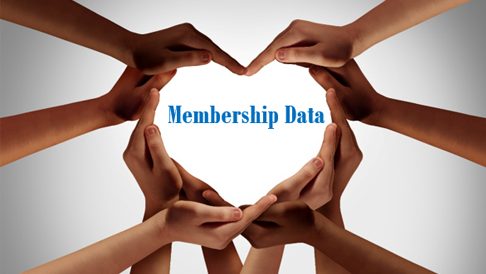Importance of Governance and Operations Assessment
 Alliances and associations, just like businesses, can get stuck in the rut of doing the same thing with the same people year after year. The inertia required to break out of that familiar approach of governing or operating an organization can be high. This is especially true when volunteer leaders have demanding day jobs that limit the detailed analysis necessary to steer the organization in new directions. Read more.
Alliances and associations, just like businesses, can get stuck in the rut of doing the same thing with the same people year after year. The inertia required to break out of that familiar approach of governing or operating an organization can be high. This is especially true when volunteer leaders have demanding day jobs that limit the detailed analysis necessary to steer the organization in new directions. Read more.
Member Retention Best Practices
 One of the main challenges facing nearly all, if not all, non-profit organizations is growing membership, to ensure not only financial security but the necessary level of 'people resourcing' so that the important work of the organization gets done and done timely.
One of the main challenges facing nearly all, if not all, non-profit organizations is growing membership, to ensure not only financial security but the necessary level of 'people resourcing' so that the important work of the organization gets done and done timely.
Of course, new member recruiting is critically important in growing your organization, but sometimes less well understood and appreciated, is the other side of that coin - member retention. Read more.
Is My Organization’s Mission Obsolete or Complete?
 What should leaders of an organization do if they find their organization’s mission is either obsolete or already completed? The decision is whether to sunset or reset the organization.
What should leaders of an organization do if they find their organization’s mission is either obsolete or already completed? The decision is whether to sunset or reset the organization.
The decision is whether to sunset or reset the organization. Sunsetting an organization can be accomplished using two approaches. Moving the organization into some sort of hibernation mode to preserve access to its deliverables. Making their specifications public could be one approach. Or, a second approach is to legally wind down the organization. Most organizational bylaws have specific clauses that govern an organization wind down and these should be followed carefully. Read more.
Technology Alliance Formation - A Method to the Madness
 Forming a technology alliance isn't as straight forward as one might think and there is a method behind the madness to ensure timing, the right steps and a plan for success are all in place before launching. Technology alliance formation is our exclusive proven process to help form an alliance by a group of aligned stakeholders. Inventures uses our three-stage process to determine: (1) whether to form a new collaborative alliance, (2) what form that alliance should take (3) when and how to launch the alliance. Once a new technology collaboration is launched, Inventures also provides a suite of services capable of managing and growing the collaboration over its complete lifecycle. A go / no-go decision at the end of each stage is used to determine whether to proceed to the next phase or not. Read more.
Forming a technology alliance isn't as straight forward as one might think and there is a method behind the madness to ensure timing, the right steps and a plan for success are all in place before launching. Technology alliance formation is our exclusive proven process to help form an alliance by a group of aligned stakeholders. Inventures uses our three-stage process to determine: (1) whether to form a new collaborative alliance, (2) what form that alliance should take (3) when and how to launch the alliance. Once a new technology collaboration is launched, Inventures also provides a suite of services capable of managing and growing the collaboration over its complete lifecycle. A go / no-go decision at the end of each stage is used to determine whether to proceed to the next phase or not. Read more.
Accelerating Innovation Through Multi-Stakeholder Collaborations
 To quote Ryunosuke Satoro, Individually, we are one drop. Together, we are an ocean.
To quote Ryunosuke Satoro, Individually, we are one drop. Together, we are an ocean.
In today's complex ecosystems (e.g., digital business and networks) and the growing number of global theater players, few companies can “do it alone.” These days, innovation often requires the cooperation of multiple stakeholders in an ecosystem in order to design and implement a solution. For example, this cooperation is often seen in network-based technology solutions and many platform business models (e.g., Linux, Android, Visa). Some of the drivers for collaboration include desire for larger markets, increased demand, and risk mitigation. By creating multi-stakeholder platforms, collaboration is enabled, which can help build larger global markets. Read more.
Implementing a Strategic Plan With "SMART" Objectives
 Having a strategic plan is a great first step, but now that plan must translate into actionable programs and initiatives for your organization. And, you must be able to track progress and measure effectiveness of these activities towards achieving the goals of your strategic plan. A strategic plan should create a multi-year operational plan and allocate the required resources accordingly. We want to share with you some of the thinking and steps necessary to realize that multi-year operational plan. Read more.
Having a strategic plan is a great first step, but now that plan must translate into actionable programs and initiatives for your organization. And, you must be able to track progress and measure effectiveness of these activities towards achieving the goals of your strategic plan. A strategic plan should create a multi-year operational plan and allocate the required resources accordingly. We want to share with you some of the thinking and steps necessary to realize that multi-year operational plan. Read more.
What Makes a Strong Technology Alliance?
 Inventures is often asked: What makes a strong technology alliance? The answer is surprisingly simple and yet difficult to execute. A strong technology alliance is centered on its industry relevance and value proposition that is usually closely tied to its IPR Policy. Additionally, an influential board, solid industry intelligence and a well-run organization are core elements to building a strong technology alliance. Read more.
Inventures is often asked: What makes a strong technology alliance? The answer is surprisingly simple and yet difficult to execute. A strong technology alliance is centered on its industry relevance and value proposition that is usually closely tied to its IPR Policy. Additionally, an influential board, solid industry intelligence and a well-run organization are core elements to building a strong technology alliance. Read more.
Membership Data is the Heart of Managing an Alliance
 Alliances and associations across the global would unanimously agree that membership data is truly the heart of managing an organization. That's exactly why we have fine-tuned and delivered the Inventures Integrated Alliance Management Platform (OpSaaS) which is the foundation for delivering all operational services in a scalable and cost-effective manner. The platform represents 20 years of experience in understanding how best to integrate and automate data required to operationally manage a technology alliance organization. Integration and automation minimizes client costs, maximizes service quality and enables organization scalability and our approach and tools are proven with proven case studies supporting over 10,000 members. Read more.
Alliances and associations across the global would unanimously agree that membership data is truly the heart of managing an organization. That's exactly why we have fine-tuned and delivered the Inventures Integrated Alliance Management Platform (OpSaaS) which is the foundation for delivering all operational services in a scalable and cost-effective manner. The platform represents 20 years of experience in understanding how best to integrate and automate data required to operationally manage a technology alliance organization. Integration and automation minimizes client costs, maximizes service quality and enables organization scalability and our approach and tools are proven with proven case studies supporting over 10,000 members. Read more.
Maximizing Benefit - Using Building Blocks of Effective Collaboration
Project leaders must leverage new models of collaboration to move at the speed of technology, maximize multi-stakeholder innovations, leverage open approaches and ensure solutions identified are relevant, scalable, affordable and equitable in their deployments. This presentation describes the framework and six key building blocks for effective technical and business team collaborations in 2021 and beyond. Read more.
Video
Benefits of Effective Collaboration for You and Your Organization
Are businesses better off by collaborating with others, even with competitors? Are all collaboration approaches equal or are some models of collaboration more effective than others? What are the building blocks of effective collaboration? Significant value to your business and your own personal fulfillment can be found in the answers to these questions. Read more. Video
Innovation Driven by Disruption
High-tech markets are defined by neverending waves of innovation and change, with advances in technology simultaneously disrupting the status quo and creating new opportunities. In the past, a company could accomplish this individually, on the strength of its proprietary technology. In the last 20 years, the landscape has shifted dramatically and, today, collaboration between multiple stakeholders is necessary to transform markets and eliminate obstacles to growth.
Read more.
Standards and Competitive Technology Strategy
This article highlights the drivers for the creation of standards and their essential role in competitive technology strategy, particularly the generation of disruptive business models. Also discussed are the key standards issues that CTOs and CIOs should consider as they develop technology strategies for their supplier, partner, competitor, and employee value chains. Read more.